My jet-lag upon returning home from visiting Peter is getting a little better each day, and I actually stayed awake until 8 PM last night, but alas, I awoke at 1:30 AM wide awake.
That's ok, I got up and practiced my guitar for a couple of hours, answered emails, fixed a hearty breakfast, and had multiple cups of coffee, so all's good!
All charged up for the day, I thought I'd write my third post about my visit with Peter and my tour of Audio Note UK, and I think you'll find the content quite fascinating, at least I do!
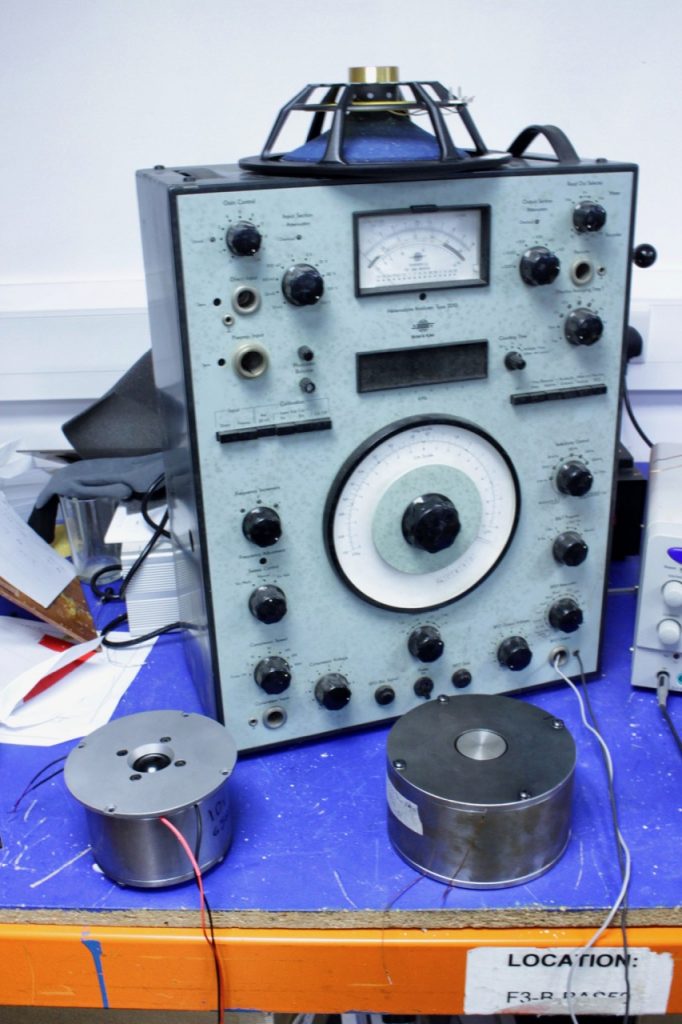
Audio Note UK prototype field-coil drivers.
Let me start with this: I alluded to the fact in my previous post that Peter and the R&D teams at Audio Note UK are in the process of developing prototype field-coil drivers (above & below photos) for a new field-coil loudspeaker project (below photo).
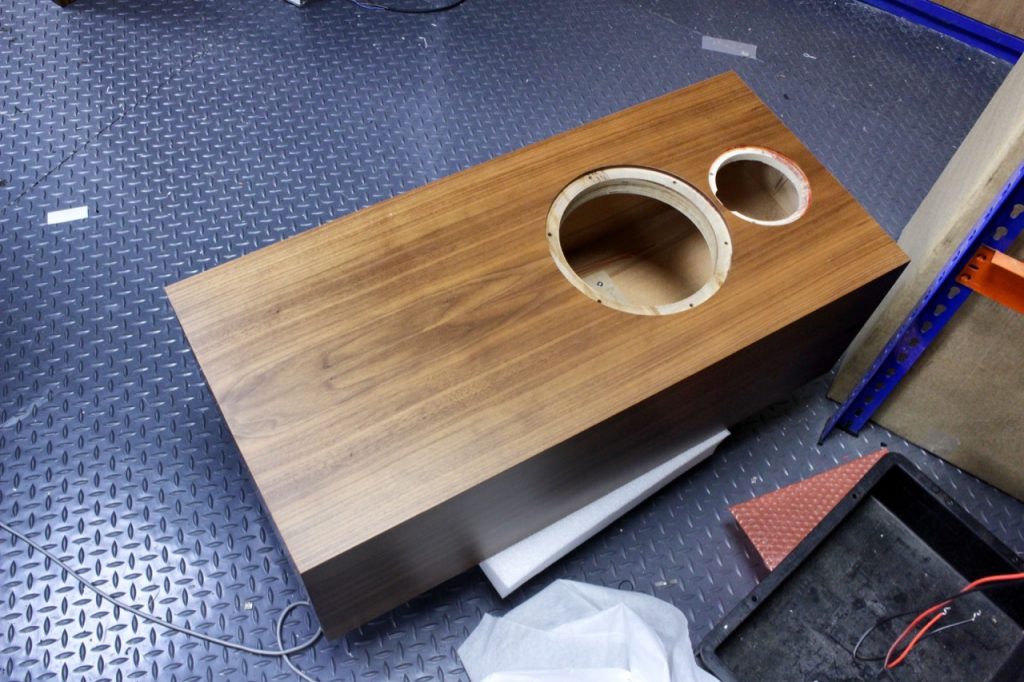
Cabinet for the prototype Audio Note UK field-coil loudspeaker project.
For those who aren't familiar with field-coil drivers, they differ from conventional drivers in that they have an electromagnet rather than a permanent magnet.

The electromagnet has a fixed field-coil around a magnetic core that replaces the permanent magnet of a conventional driver.
I have a few friends with field-coil driver loudspeakers, and they are very enthusiastic about the improvements offered by the field-coils over conventional magnets, which they say sound more "live-like" and "immediate" than drivers with conventional magnets.
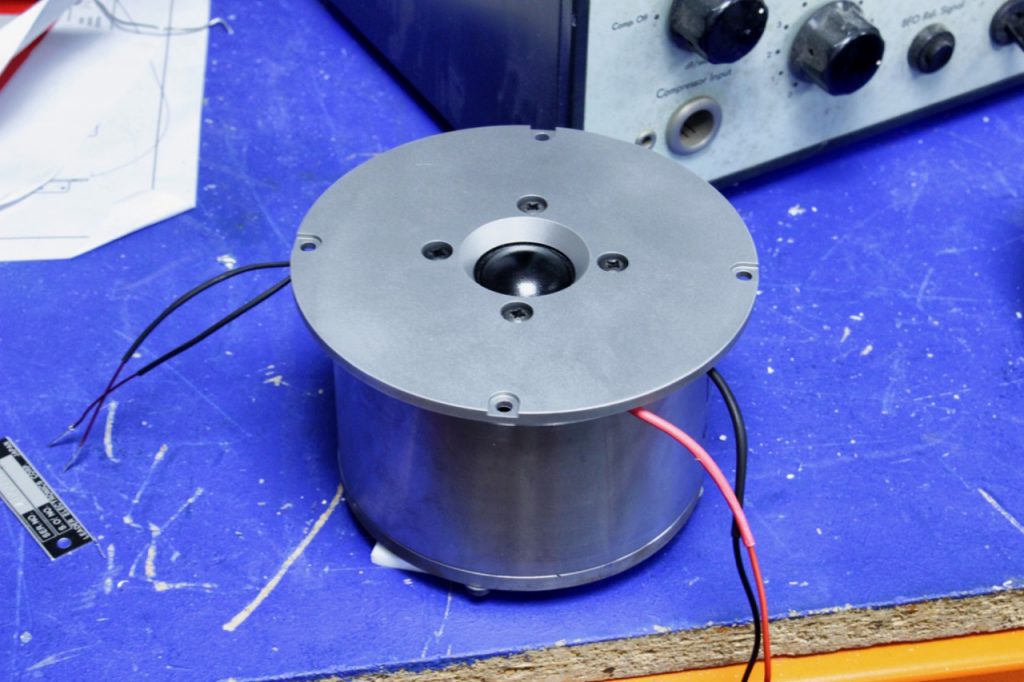
Audio Note UK prototype field-coil high-frequency driver, which I believe is the world's first field-coil dome tweeter.
In the early days of audio, starting in the 1920s, field-coil magnets ruled, because permanent magnets that could achieve an equivalent gauss in the gap were too big and heavy to be practical, and relatively light and powerful field-coil magnets were a better solution.
Over time permanent magnets improved and became more practical to use, and started displacing the more expensive to produce field-coil magnets, even though the field-coil magnets had performance advantages.
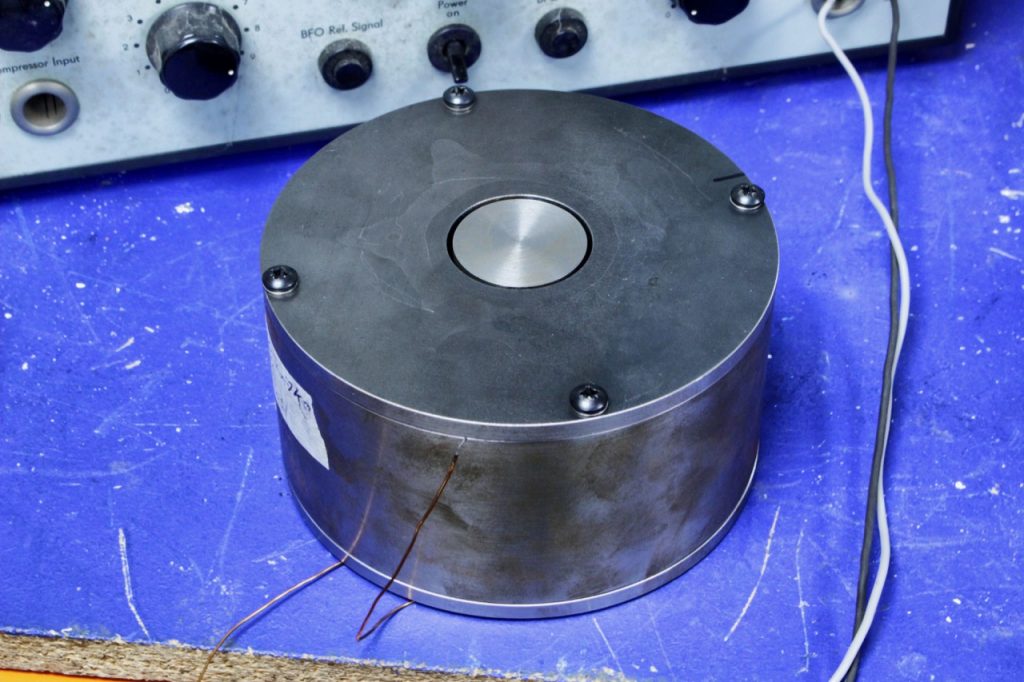
Audio Note UK prototype low-frequency field-coil magnet.
In the photo above you can see the Audio Note UK prototype field-coil magnet that would be coupled to the driver in the photo below.

A change due to lower manufacturing costs is not unique to audio, but I'm glad that there's renewed interest in field-coil drivers and the additional performance potential they offer for audio enthusiasts.
I'm new to - and still learning about - field-coil drivers, but as I learn more I'll be filling you in on what I find out, and of course I'll fill you in about any updates on the Audio Note UK field-coil prototype loudspeakers as I hear about them.

If you remember, in my previous post I mentioned the remarkably consistent musicality & sonic performance I've heard from Audio Note UK equipment at audio shows in the US over the years.
That's impressive given how difficult show rooms (hotel rooms) are for achieving good sound. For a lot of manufacturers it's a hit or miss affair from year-to-year, but not for Audio Note UK, they consistently provide excellent musicality & sonics.
How do they do that?
Look at the above photo and note where the Audio Note UK loudspeaker is sitting in the show room at the Rocky Mountain Audio Fest from a few years ago, and do the same for the Audio Note UK loudspeaker in Peter's home listening room in the photos below.
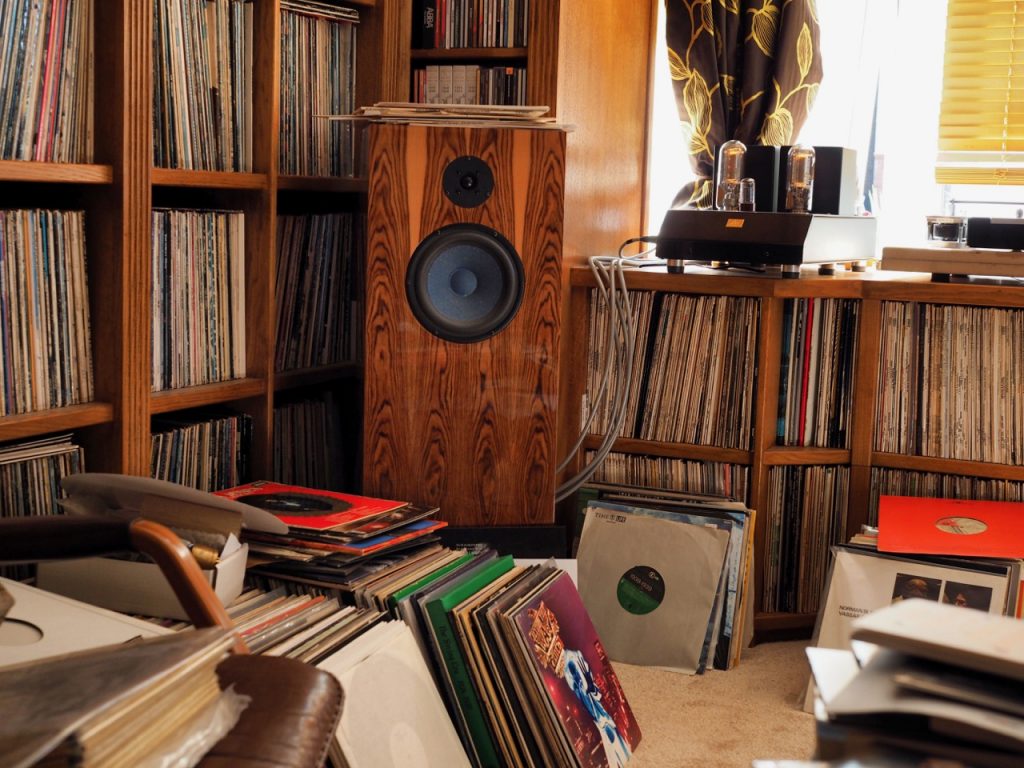
They're sitting in the corners of the rooms rather than being positioned out into the room in a rule of thirds (or other) position.
The Audio Note UK loudspeakers overall & crossover design is optimized so that the loudspeakers perform superbly in room corners, and that effectively removes the room boundaries as a source of issues for performance, and it makes a big difference in getting good performance in real-world home listening rooms, or particularly the not so good sounding hotel rooms of audio shows.
That's how - at least in part - Audio Note UK gets such consistent and good sounding performance at audio shows from year to year, and of course, Peter's system sounds positively enchanting!
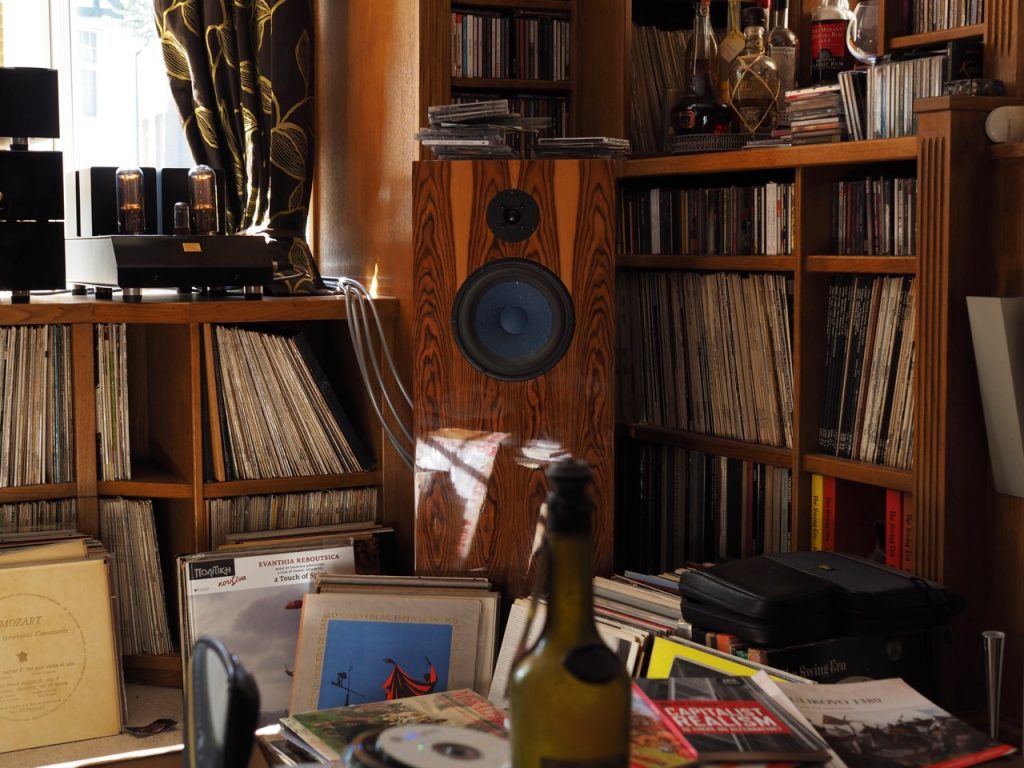
As an aside, I might add that's similar in concept to how I've managed to get such good performance from my vintage Altec A5 Voice of the Theatre loudspeakers that are sitting in room corners in a near-field arrangement in my audio-visual room - by optimizing the crossovers for that positioning, which effectively eliminates room boundary issues from affecting their performance. I might also add that's why my vintage Altec 832A corner loudspeakers sound so good in my bedroom system, they're designed in a way that removes the room as a sonic issue.
There's other less obvious benefits than removing room boundary issues by optimizing loudspeaker performance for use in corners, like freeing up more space in your room, and making the appearance of the loudspeakers in the room much more acceptable to your significant other.
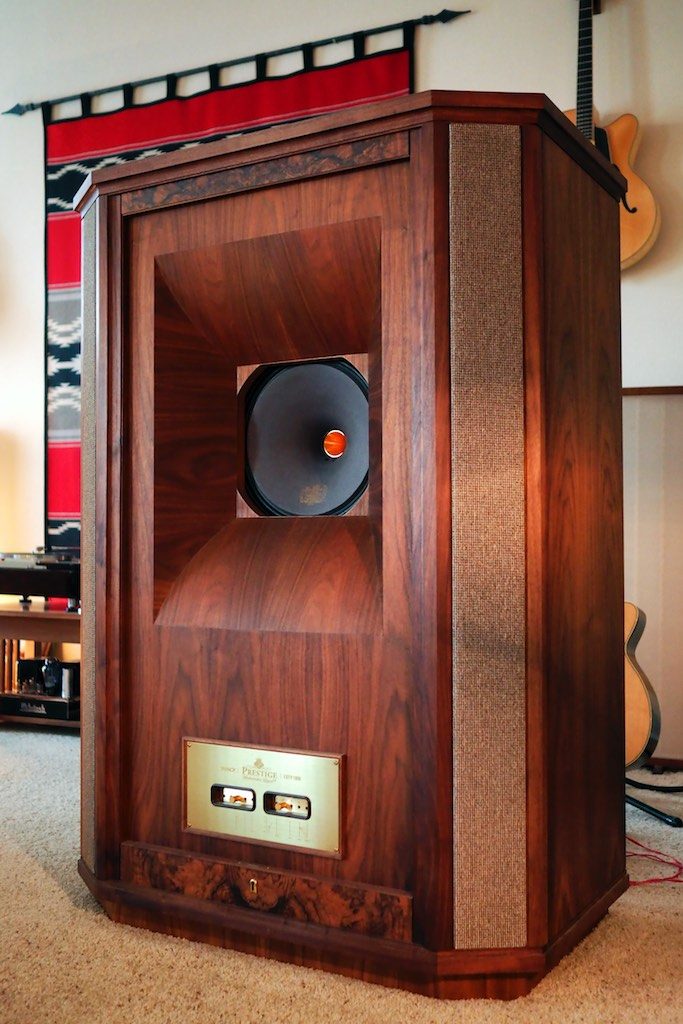
Tannoy Westminster Royal SE loudspeakers.
A couple of lady friends ago, a lady friend asked me to move the "big and ugly" Tannoy Westminster Royal SE speakers dominating my living room at the time out into my garage, so she could do a little permanent redecorating.
To her discomfiture my lady friend got moved out the door instead, but in retrospect, a pair of Peter's Audio Note UK loudspeakers might have saved that relationship!
Ok, maybe not, but all kidding aside, still there are definite advantages for having loudspeakers that perform optimally in room corners, in terms of performance in real-world living spaces by removing room boundary issues, freeing up room space, and improving aesthetics in a home living environment, which are all good things and important considerations, particularly for those living in smaller living spaces.
Now add to that the exciting prospect of those same loudspeakers with field-coil drivers - very cool!
Ok, that's it for now, I'm off to get some needed things done, but I'll be back to tell you more insights and entertaining things from my visit with Peter and the tour of the Audio Note UK headquarters in Brighton, England.
As always, thanks for stopping by Jeff's Place to visit with me, and may the tone be with you!



























